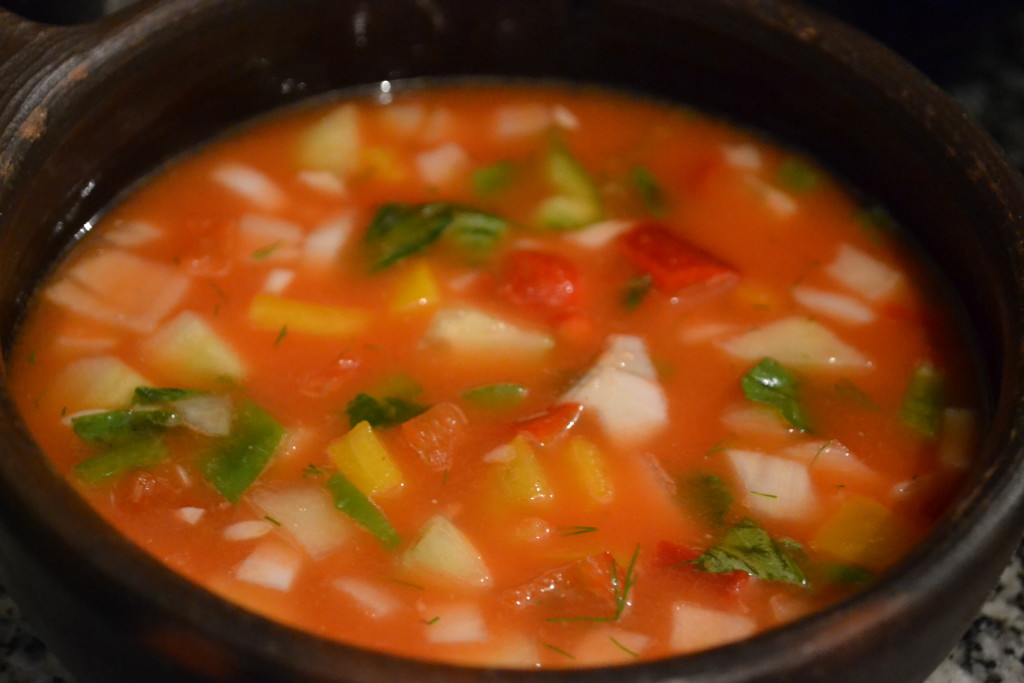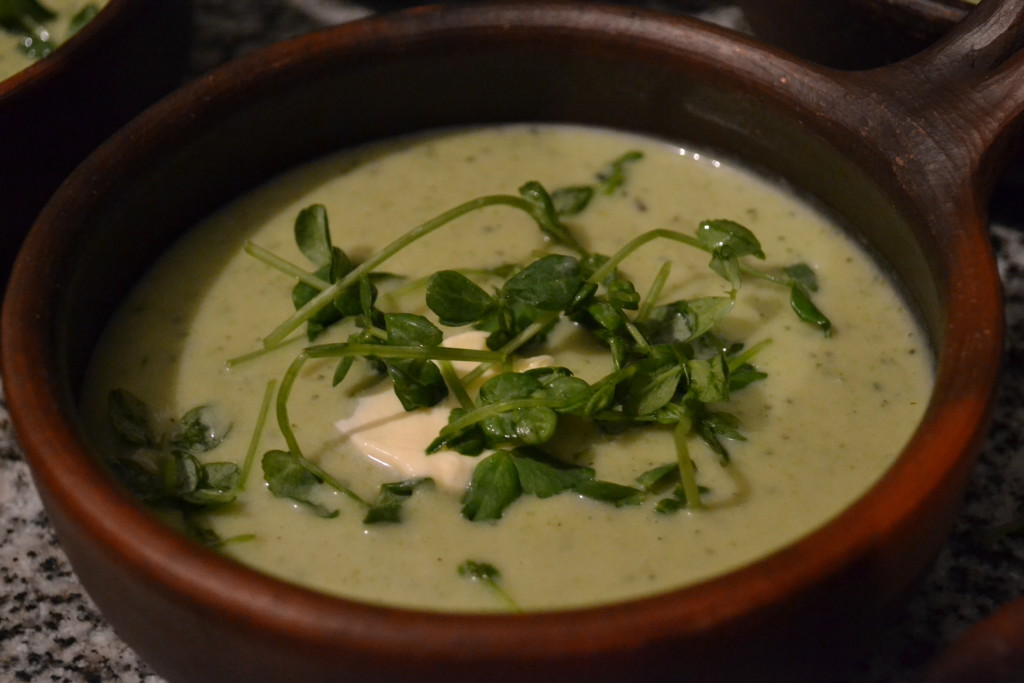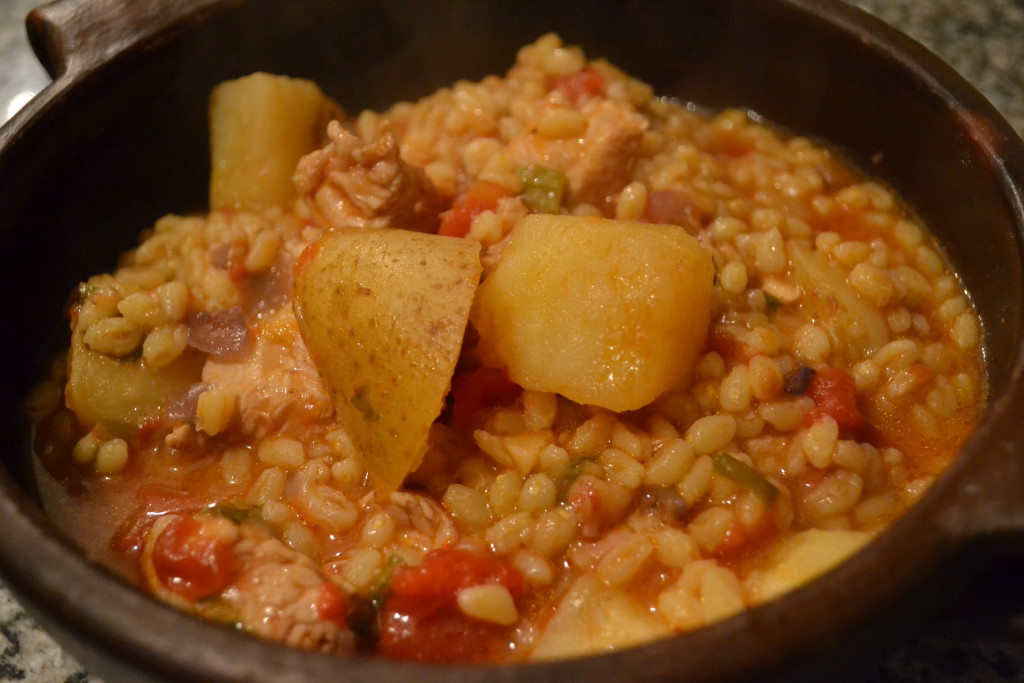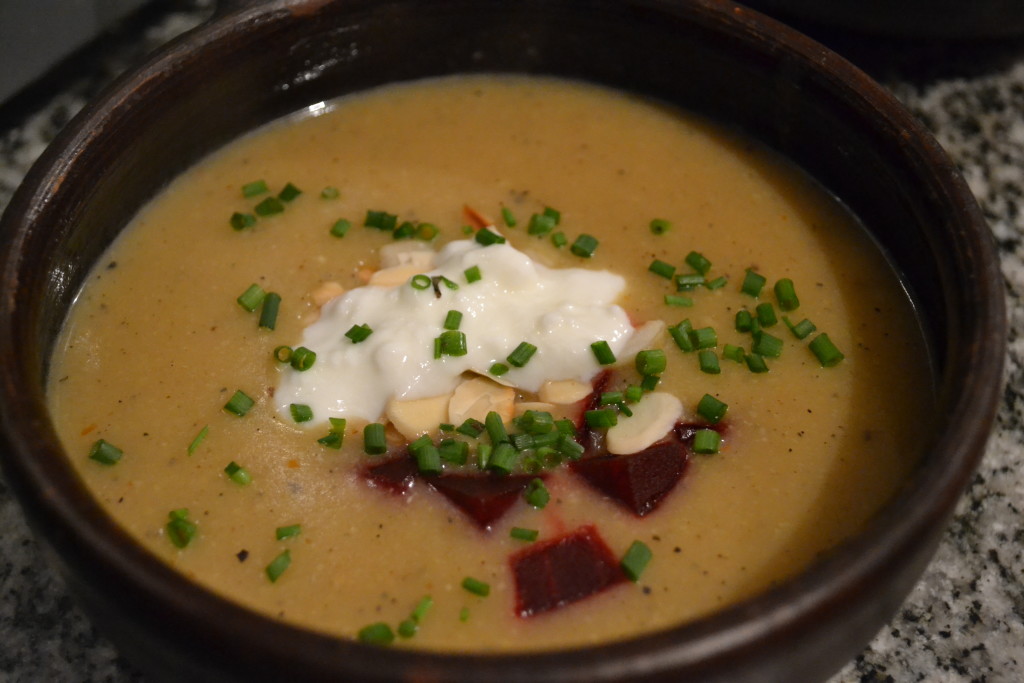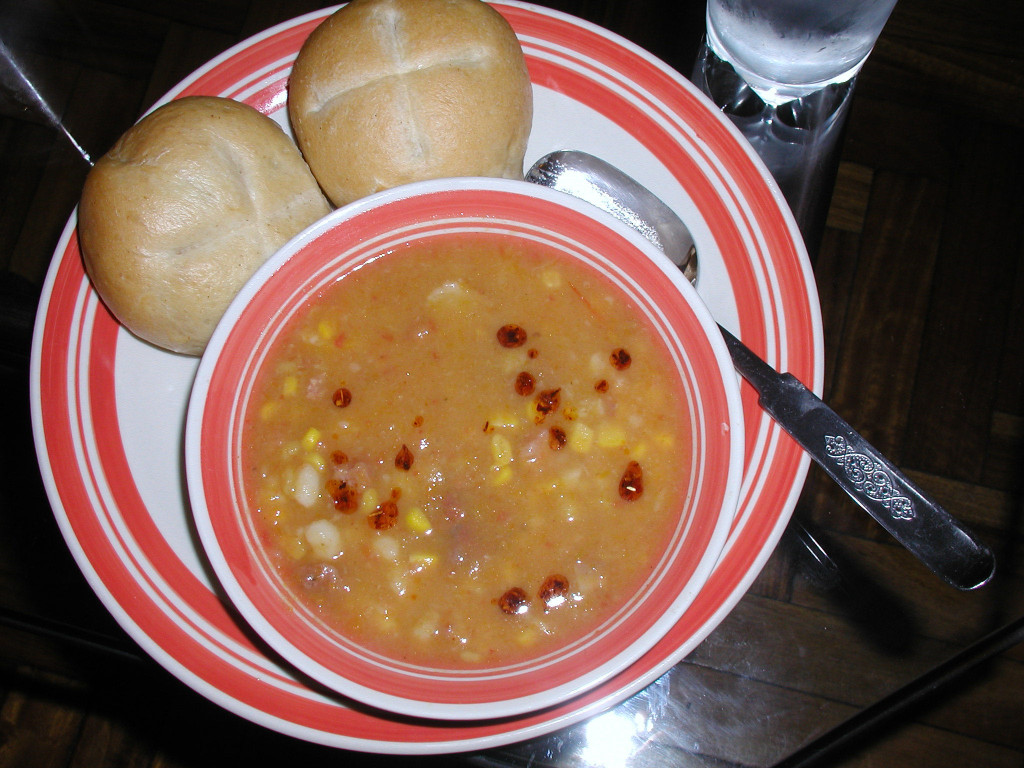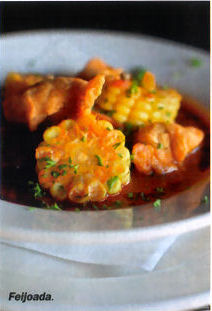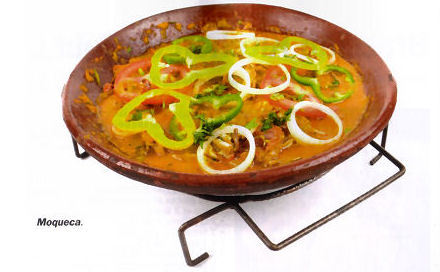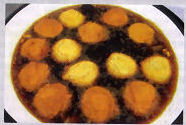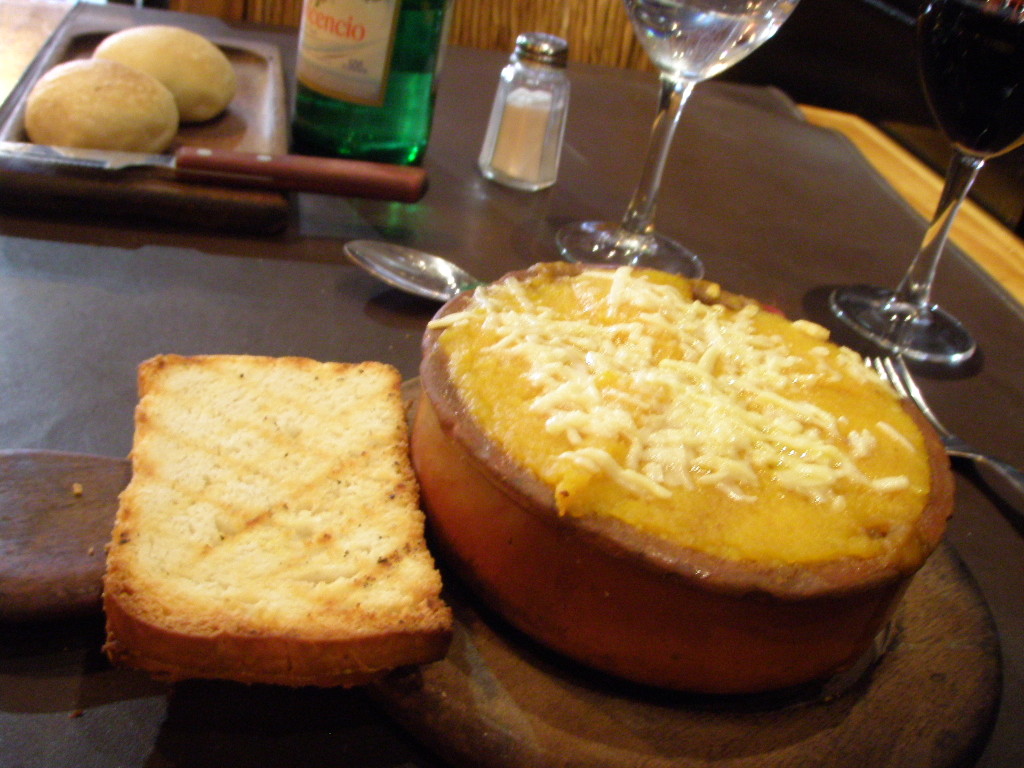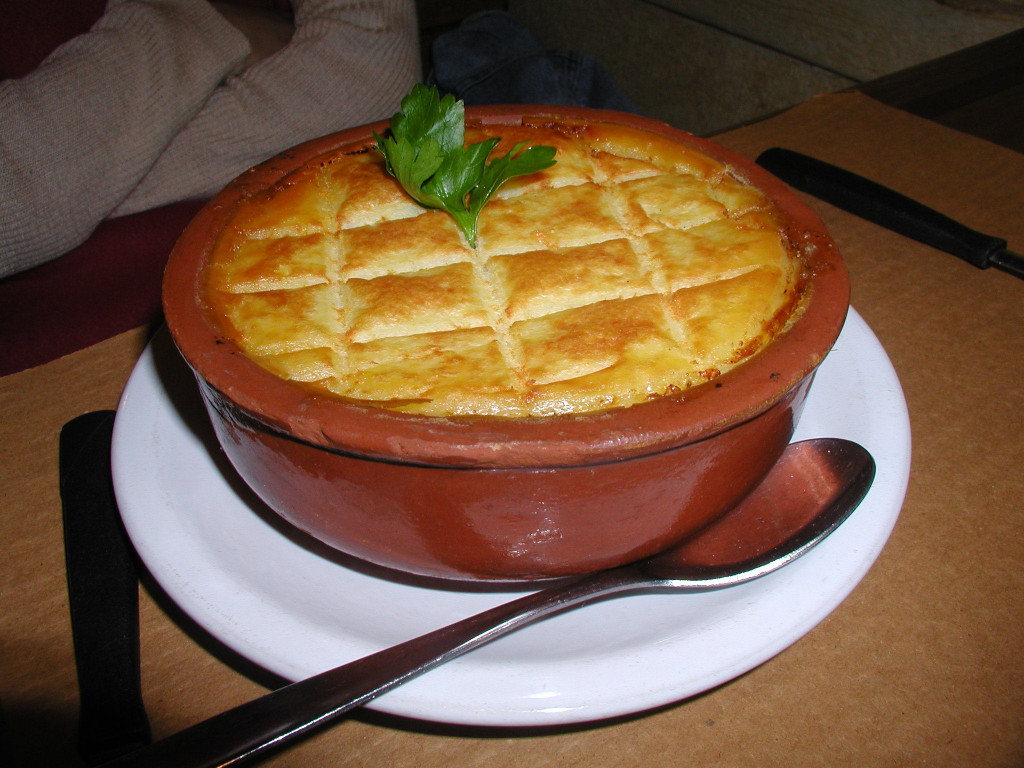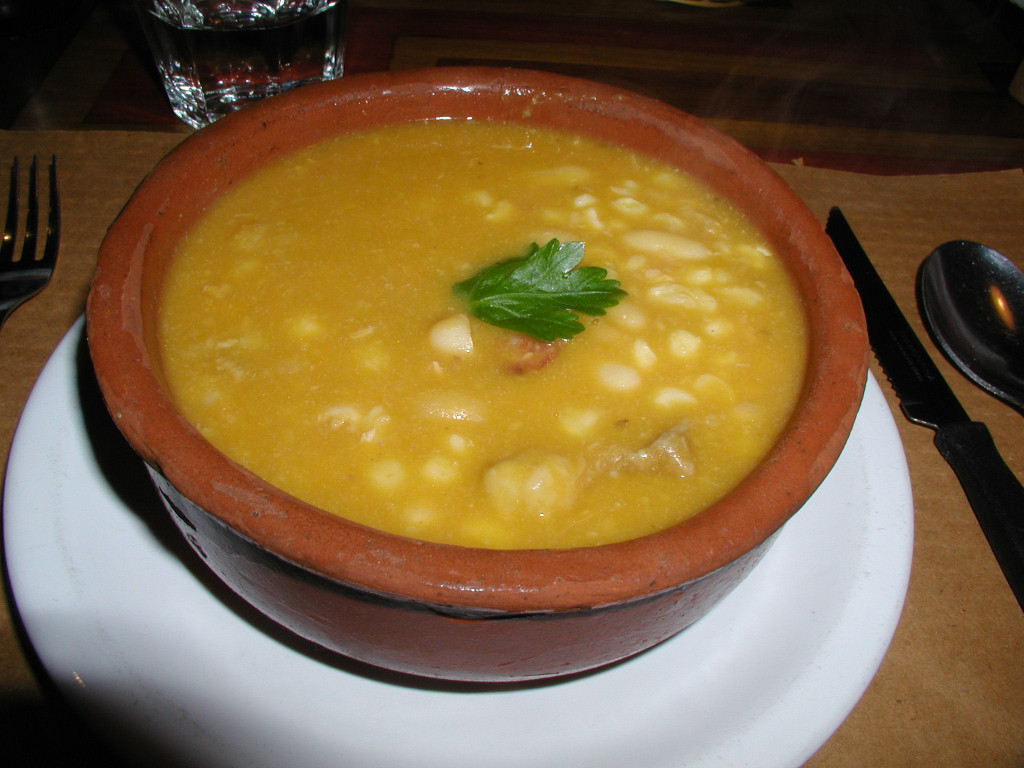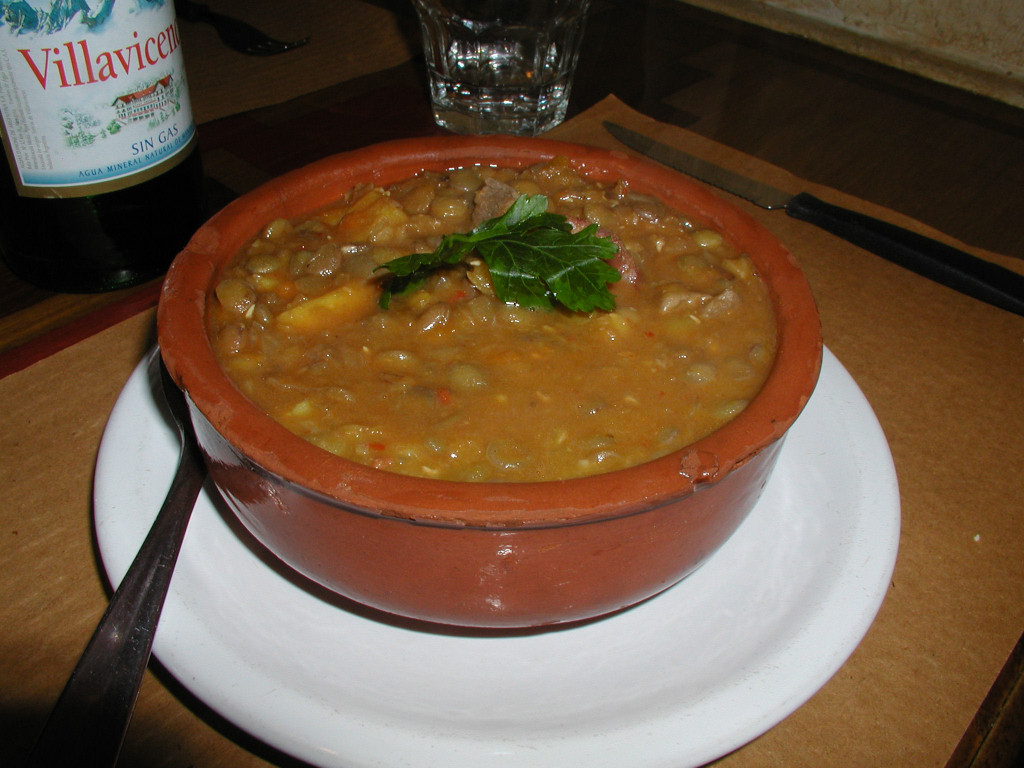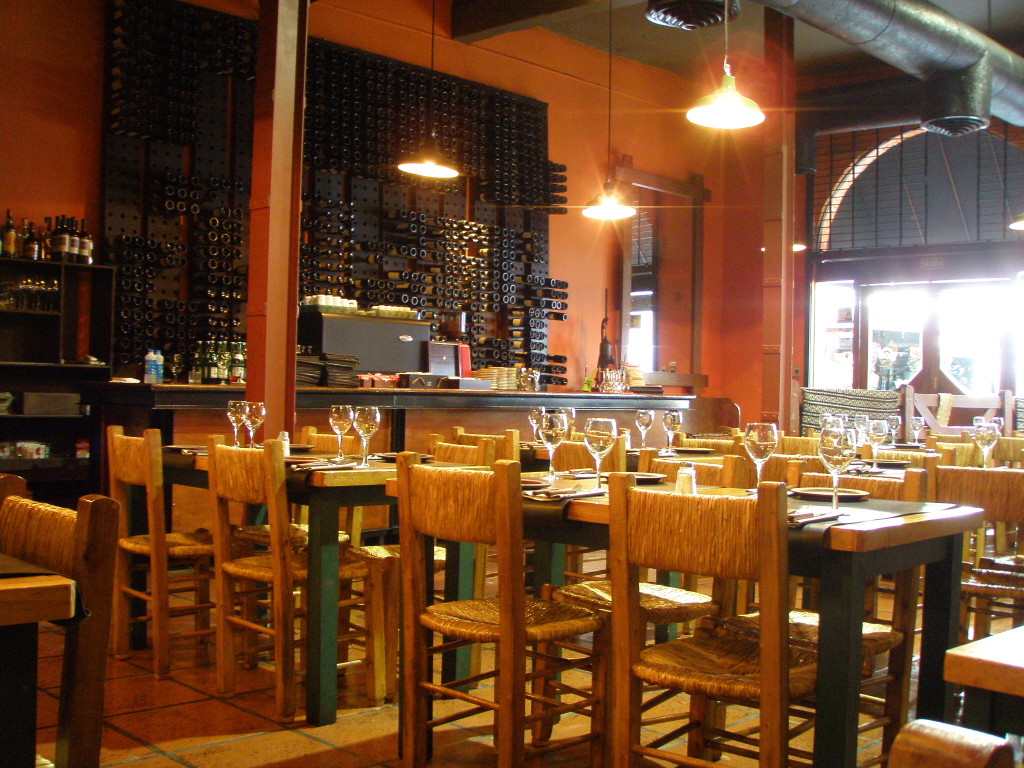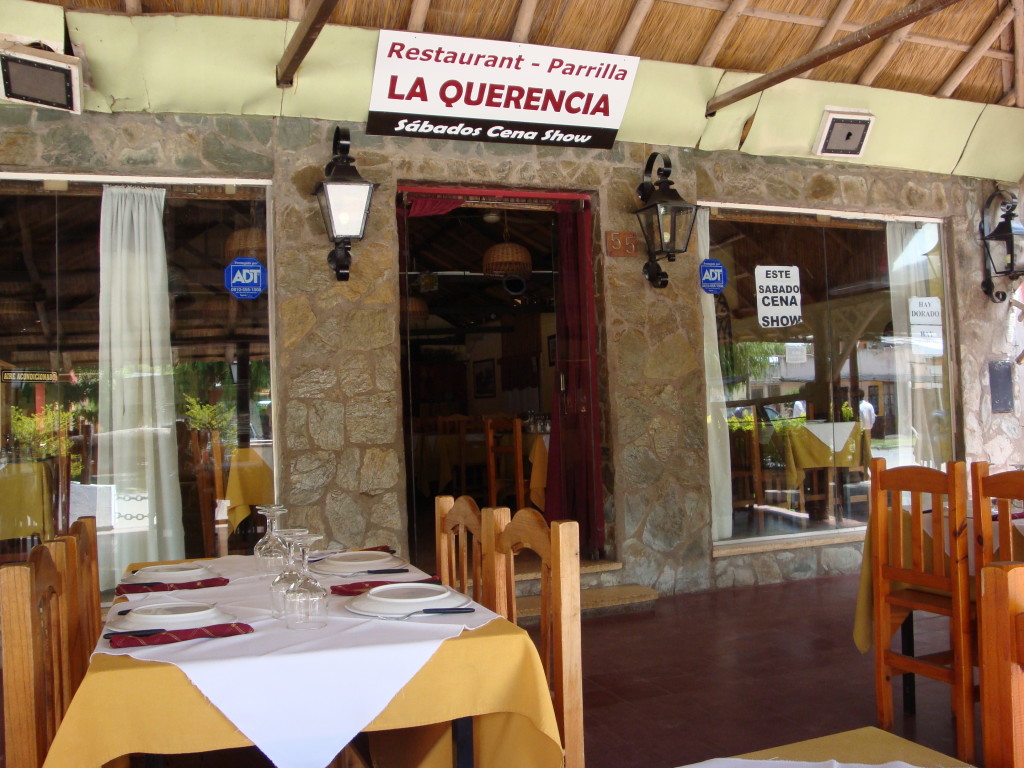Soup with a chill
On Sunday supplement
Food and Wine
Anyone who knows me knows that I’d be perfectly happy to live on soup, day in and day out. Well, and maybe pasta. And sushi. And, well, okay, not so much day in and day out, but I like my soup and am happy to eat it on a regular basis. Here in Argentina soup is not a commonplace menu item. There are rich, hearty stews like locro and lentejas, but a simple bowl of soup, other than the sudden appearance of cream of squash soup that seems to happen every fall, is hard to find.
I blame it on Mafalda, the nationally treasured cartoon character who despite not having been published for going on 40 years seems to maintain a massive influence on people’s attitudes about politics, culture, and, soup. She wasn’t much for the stuff, and it seems that devotees of her are not either. There was even a study done in 1998 that showed a remarkable inverse correlation between those who considered themselves fans of hers and those who considered themselves fans of soup.
When hot weather rolls around we start to think about chilled soups here at home. They make great lunches with a nice bit of fresh bread from the oven, or the bakery, and they also make a great start to an evening’s repast. Here are a couple of favourites, just to start the season. I may get a little more elaborate down the line, we shall see.
Watermelon Gazpacho
1 large wedge of watermelon (enough so that the pulp will pretty much fill a standard blender)
1 red bell pepper
1 green bell pepper
1 yellow bell pepper
1 onion
1 cucumber
2-3 chilies
2-3 cloves of garlic
1 bunch basil
60 ml good olive oil
60 ml red wine vinegar
salt and pepper
Some people like their gazpacho pureed, others like it chunky. I fall somewhere in between. I puree a part of it and leave the rest in small dice. If you’re not a watermelon fan, replace the watermelon with 7-8 plum tomatoes and proceed.
Remove as many seeds as you can from the watermelon and take it off the rind. Pack the flesh into a blender along with the chilies, garlic (start with 1-2 each and work your way up until you get the flavor you like), basil, olive oil and vinegar. Blend until smooth, strain to remove any remaining seeds that you might have missed. Season to taste with salt and pepper. Dice the bell peppers, onion and cucumber (peeled or not, your choice) and add to the pureed soup in a large container that will fit in your refrigerator. Chill until it’s quite cold, four or five hours minimum. Serve with a crusty bread loaf and enjoy!
Chilled Green Bean Soup
Everyone makes chilled pea soup, why not do something a little different?
½ kg green beans (either French or Italian – round or flat)
3-4 leeks
1 large potato
2 tablespoons butter
1 liter vegetable stock (from cube or homemade)
1 bunch mint
2 teaspoons salt
1 teaspoon white pepper
½ teaspoon ground cloves
200 ml cream
pea sprouts or watercress to garnish
Clean the leeks well and coarsely chop them. Cook them with the butter over the lowest flame your stove will manage until they’re soft – “sweating” them. Peel and dice the potato and add it to the pot along with the seasonings and the vegetable stock. Turn the heat up, bring to a boil and then simmer until the potato is cooked through.
Meanwhile, “blanch and shock” the green beans and mint. If you ever wondered just what that meant – bring a pot of lightly salted (1 tablespoon/liter, roughly) water to a boil. Add the green beans, trimmed of their ends, and cook until they turn bright green and just soften – about 5 minutes. Add the mint and simmer for just about 10-15 seconds longer. Drain the beans and mint through a colander and then plunge them into very cold, preferably iced, water to stop the cooking and set the bright green color.
When both these components are ready, puree them together in a blender. Add most of the cream, reserve a little for decoration. Chill well, about 4-5 hours. Serve topped with a drizzle of the cream and the fresh pea sprouts or watercress.
A series of recipes and articles that I started writing for the Buenos Aires Herald Sunday supplement, Food & Wine section, at the beginning of 2012. My original proposal to them was to take local favorite dishes and classics and lighten them up for modern day sensibilities. We’re not talking spa or diet recipes, but at the very least, making them healthier in content, particularly salt, fat and portion size. As time went by, that morphed into a recipe column that, while emphasizing food that is relatively “good for you”, wasn’t necessarily focused on local cuisine. At the beginning of 2013 I decided to stop writing for them over some administrative issues, but it was fun while it lasted.
